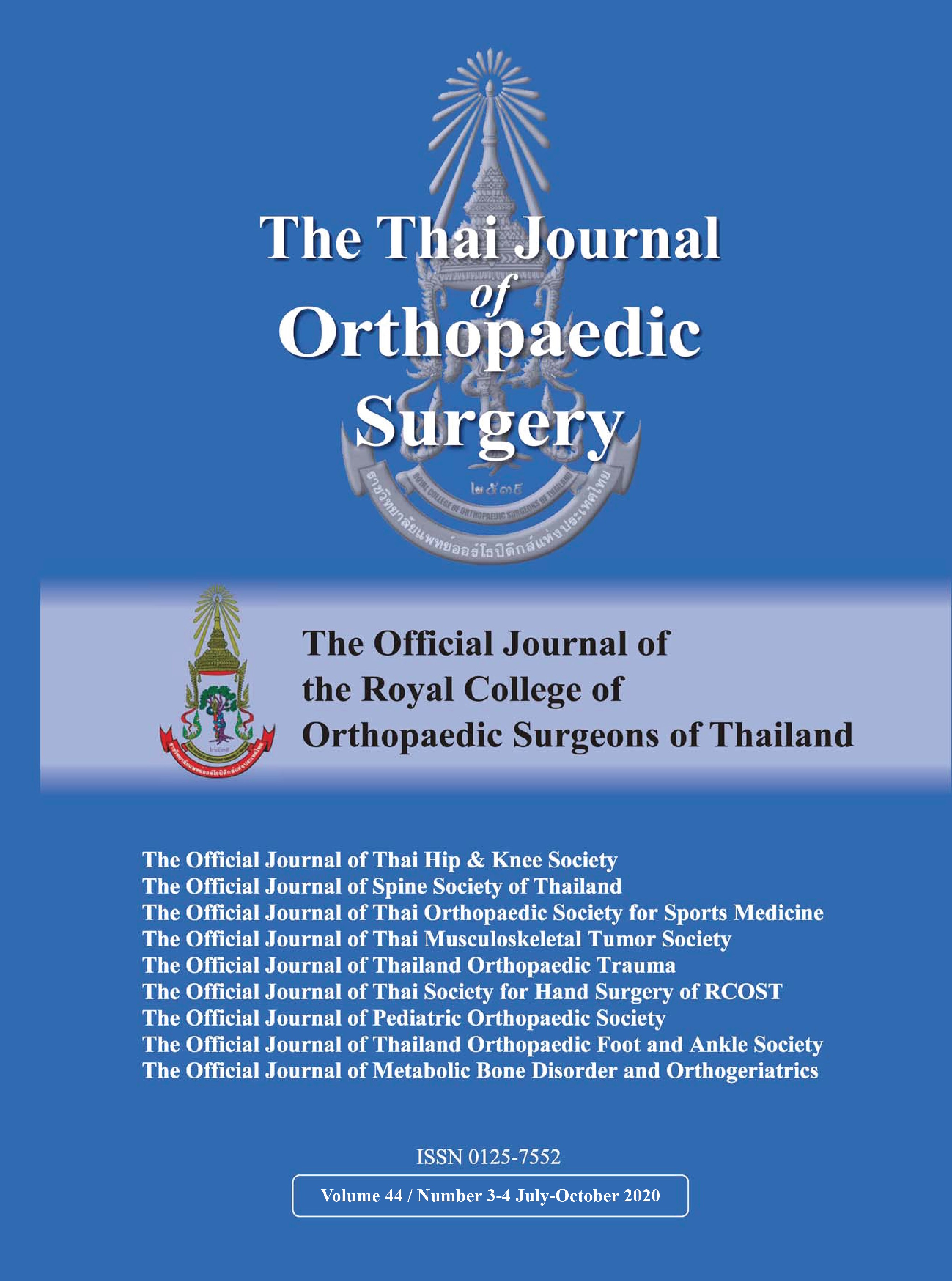Tumor Induced Osteomalacia
Main Article Content
Abstract
Objective: Tumor induced Osteomalacia (TIO) is a rare paraneoplastic syndrome which mostly caused by mesenchymal cell tumors that secrete a phosphaturic hormone called fibroblast growth factor-23 (FGF-23). These FGF-23-secreting tumors have its uniqueness of being a small tumor which are deep-seated inside patient’s body and they are very difficult to be located. This report is about an epidural mesenchymal tumor adjacent to 6th thoracic vertebrae.
Method: To locate the culprit tumor using thorough physical examination, clinical radiographs with functional imaging and laboratory investigations in a 71-year-old female patient presented to our office with TIO.
Result: A 71-year-old female came with chief complaints of moderate body pains, muscle weakness and increasing thoracic kyphosis in 2 years. Laboratory investigation shows hypophosphatemia. Plain radiographs found pseudofracture of distal phalanx of her right thumb without any history of trauma. Parathyroid scan (MIBI + Pertechetate) shows an enhancing nodule measuring about 0.5×1.1 cm locate at lower pole of right parathyroid gland with further imaging of MRI Neck and Thorax found an epidural elongated mass measuring about 0.8×1.3×2 cm adjacent to 6th thoracic vertebrae. By the 6th day after tumor removal, serum phosphorus level reached normal range. Patient’s symptoms were improved without phosphorus supplements. Histological reports show its cell type as spindle cell tumor.
Conclusion: TIO is body conditions response from over-regulated FGF-23 secretion of small soft tissue tumor. which very difficult to be located. Once complete tumor resection is done, TIO will be complete cured.
Article Details
References
2. Uramoto N, Furukawa M, Yoshizaki T. Malignant phosphaturic mesenchymal tumor, mixed connective tissue variant of the tongue. Auris Nasus Larynx. 2009; 36(1): 104-5.
3. Crossen SC, Zambrano E, Newman B, Bernstein JA, Messner AH, Bachrach LK, et al. Tumor-induced osteomalacia in a 3 year-old with unresectable central giant cell lesions. J Pediatr Hematol Oncol. 2017; 39(1): e21-e24.
4. Clunie GPR, Fox PE, Stamp TCB. Four cases of acquired hypophosphataemic ('oncogenic') osteomalacia. Problems of diagnosis, treatment and long-term management. Rheumatology. 2000; 39(12): 1415-21.
5. Feng J, Jiang Y, Wang O, Li M, Xing X, Huo L, et al. The diagnostic dilemma of tumor induced osteomalacia: a retrospective analysis of 144 cases. Endocr J. 2017; 64(7): 675-83.
6. Florenzano P, Gafni RI, Collins MT. Tumor-induced osteomalacia. Bone Rep. 2017; 7: 90-7.
7. Andreopoulou P, Dumitrescu CE, Kelly MH, Brillante BA, Peck CMC, Wodajo FM, et al. Selective venous catheterization for the localization of phosphaturic mesenchymal tumors. J Bone Miner Res. 2011; 26(6): 1295-302.
8. Minisola S. Tumor-induced osteomalacia. Nat Rev Dis Primers. 2017; 17044.
9. Hesse E, Rosenthal H, Bastian L. Radiofrequency ablation of a tumor causing oncogenic osteomalacia. N Engl J Med. 2007; 357(4): 422-4.
10. Chong WH, Yavuz S, Patel SM, Chen CC, Collins MT. The importance of whole body imaging in tumor-induced osteomalacia. J Clin Endocrinol Metab. 2011; 96: 3599-600.
11. Zhang X, Imel EA, Ruppe MD, Weber TJ, Klausner MA, Ito T, et al. Pharmacokinetics and pharmacodynamics of a human monoclonal anti-FGF23 antibody (KRN23) in the first multiple ascending-dose trial treating adults with X-linked hypophosphatemia. J Clin Pharmacol. 2016; 56(2): 176-85.


